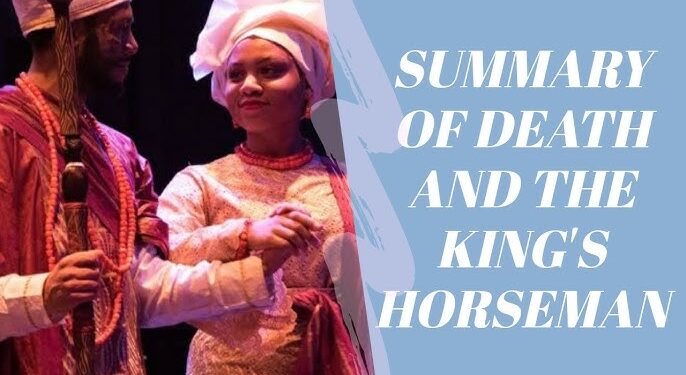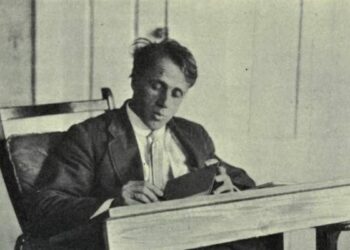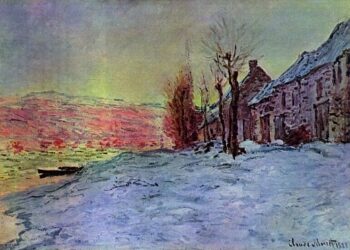Introduction
Death And The King’s Horseman Summary By Wole Soyinka “Death and the King’s Horseman” is a renowned play by Nigerian playwright Wole Soyinka, first performed in 1975. The play is rooted in the historical events surrounding the British colonial presence in Nigeria and draws upon the Yoruba culture and traditions. It explores themes of duty, cultural conflict, and the consequences of colonialism through the lens of a tragic story.Death And The King’s Horseman Summary By Wole Soyinka
Set in the Yoruba town of Oyo, the play revolves around the ritual suicide of Elesin, the king’s horseman, who is required to follow the recently deceased king into the afterlife. However, the arrival of British colonial officers interrupts this tradition, leading to tragic consequences. The play invites audiences to reflect on the complexities of cultural identity, the clash between tradition and modernity, and the moral dilemmas faced by individuals caught between conflicting worlds.Death And The King’s Horseman Summary By Wole Soyinka
Act One Summary
Scene 1: The Arrival of the King’s Horseman
The play opens with a vibrant scene in Oyo, where the townspeople prepare for the ritualistic transition following the death of the king. Elesin, the king’s horseman, is a prominent figure in the community, responsible for escorting the king’s spirit to the afterlife. As Elesin prepares for his duty, he expresses a sense of pride and readiness to fulfill his obligations, showcasing his deep connection to Yoruba culture and traditions.Death And The King’s Horseman Summary By Wole Soyinka
The first scene introduces important characters, including the Praise-Singer, who glorifies Elesin and his heroic status. The Praise-Singer’s role is vital in reinforcing the cultural significance of the ritual, as he highlights the relationship between the living and the dead in Yoruba beliefs. The community is depicted as vibrant and deeply connected to their traditions, illustrating the significance of Elesin’s impending sacrifice.Death And The King’s Horseman Summary By Wole Soyinka
Read More
Scene 2: Elesin’s Desire
As Elesin interacts with various townspeople, his character is further developed. He displays a sense of confidence and charisma, embodying the ideals of masculinity and duty within Yoruba culture. However, he also reveals a more human side, as he expresses his desire for the pleasures of life, including his romantic interests, particularly in a beautiful young woman present at the festivities.
This duality in Elesin’s character sets the stage for the central conflict of the play. While he is duty-bound to fulfill his role, he is also tempted by the joys of life, reflecting the complexity of human experience. This tension foreshadows the tragic events that will unfold as the story progresses.

Scene 3: The Arrival of the British Colonialists
As the ritual preparations continue, the scene shifts to the arrival of British colonial officers, particularly Pilkings and his wife, Jane. Their presence introduces a stark contrast to the traditional Yoruba customs. Pilkings is portrayed as a colonial administrator who is both intrigued and dismissive of local traditions. He believes he understands the people he governs but is fundamentally disconnected from their cultural practices.Death And The King’s Horseman Summary By Wole Soyinka
The interactions between Pilkings and the local community illustrate the cultural clash at the heart of the play. Pilkings, with his Western sensibilities, views the ritual as barbaric, reflecting the colonial mindset that often belittles indigenous practices. This clash sets the stage for the central conflict as Pilkings intervenes in a sacred tradition that he cannot comprehend.
Act Two Summary
Scene 1: Elesin’s Decision
In the second act, the tension escalates as Elesin prepares for his ritual suicide. He is aware of the importance of his duty and understands the ramifications of failing to fulfill it. However, he is also aware of the changes brought about by colonial influence. Elesin’s decision becomes increasingly complicated as he grapples with his responsibilities to his community and his desires as an individual.Death And The King’s Horseman Summary By Wole Soyinka
The arrival of the colonial officers adds further complexity to Elesin’s situation. Pilkings attempts to exert control over the events, insisting that Elesin must not proceed with the ritual. This intervention symbolizes the overarching power dynamics at play, as colonial authority seeks to dictate the actions of the indigenous people.
Read More
Scene 2: The Struggle for Identity
As Elesin faces the mounting pressure from Pilkings, he engages in a struggle for identity. He tries to assert his autonomy while being confronted by the realities of colonialism. This conflict is intensified by the interactions with Jane, who is initially sympathetic but ultimately unable to grasp the full significance of the ritual. Her misunderstanding further illustrates the cultural divide, highlighting the challenges faced by individuals caught between conflicting values.
This act explores the themes of duty, honor, and the struggle for cultural identity. Elesin’s internal conflict deepens as he is torn between his obligations and his desires, making his ultimate decision all the more tragic.Death And The King’s Horseman Summary By Wole Soyinka
Act Three Summary
Scene 1: The Ritual’s Interruption
In the climactic final act, the ritual is abruptly interrupted by Pilkings’ orders. Elesin is prevented from completing his duty, leading to a profound crisis in the community. The cultural implications of this interruption are significant, as the balance between the living and the dead is disrupted. The townspeople’s reactions reflect their deep sense of loss and confusion, showcasing the far-reaching consequences of colonial interference.
Elesin, now faced with the reality of his failure, grapples with the loss of his identity and purpose. His pride and honor are shattered, leading to a tragic unraveling of his character. The community’s grief is palpable as they witness the collapse of their traditions, resulting in chaos and despair.

Scene 2: The Tragic Conclusion
The play concludes with Elesin’s ultimate choice, driven by despair and loss of honor. In a moment of deep sorrow, he takes his own life, believing it to be the only way to fulfill his duty. His suicide becomes a powerful statement about the importance of cultural identity and the consequences of colonial disruption.
The ending serves as a poignant reminder of the sacrifices made in the name of duty and the profound impact of cultural dislocation. The final moments emphasize the tragic consequences of misunderstanding and the irreparable damage inflicted upon a culture by external forces.
Read More
Themes
1. Cultural Conflict
The primary theme of “Death and the King’s Horseman” is the clash between traditional Yoruba culture and British colonialism. The play illustrates how colonial authority seeks to undermine indigenous practices, leading to a loss of identity and purpose for individuals like Elesin.
2. Duty and Honor
Duty is a central motif in the play, particularly as it pertains to Elesin’s role as the king’s horseman. His commitment to fulfilling his obligations is challenged by external forces, highlighting the struggle between personal desires and societal expectations.
3. The Nature of Death
The play explores the concept of death and the afterlife within Yoruba culture. The ritual suicide is portrayed not as an act of despair but as a necessary transition that maintains the balance between the living and the dead.
4. Gender Dynamics
The interactions between male and female characters reveal underlying gender dynamics within the culture. Elesin’s relationships with women, particularly his desire for sensual pleasures, complicate his sense of duty and responsibility.
5. Tragedy of Misunderstanding
The tragic consequences of colonialism are exacerbated by a fundamental misunderstanding of Yoruba culture. The British characters’ inability to comprehend the significance of the ritual leads to catastrophic outcomes, emphasizing the importance of cultural empathy.
Conclusion
“Death and the King’s Horseman” is a powerful exploration of cultural identity, duty, and the tragic consequences of colonialism. Wole Soyinka’s masterful storytelling highlights the complexities of human experience and the profound impact of societal forces on individual lives. The play serves as a poignant reminder of the importance of understanding and respecting cultural traditions in a world increasingly shaped by external influences.
Through its rich characters and themes, the play invites audiences to reflect on their own beliefs and the ways in which culture shapes identity. Soyinka’s work remains relevant today, serving as a powerful commentary on the ongoing struggles faced by individuals caught between conflicting worlds.
(FAQs)
1. What is the central conflict in “Death and the King’s Horseman”?
The central conflict revolves around the clash between traditional Yoruba customs and British colonial authority. Elesin, the king’s horseman, must fulfill his duty of ritual suicide to follow the king into the afterlife, but his ritual is interrupted by colonial officers who do not understand the cultural significance of the act.
2. Who are the key characters in the play?
Key characters include:
- Elesin: The king’s horseman, responsible for escorting the king’s spirit to the afterlife.
- Pilkings: The British colonial officer who represents colonial authority and intervenes in the ritual.
- Jane Pilkings: Pilkings’ wife, who is initially sympathetic but ultimately unable to comprehend the significance of the ritual.
- The Praise-Singer: A character who praises Elesin and highlights the importance of tradition.
3. What themes are explored in the play?
The play explores several themes, including cultural conflict, duty and honor, the nature of death, gender dynamics, and the tragedy of misunderstanding. These themes are interwoven throughout the narrative, illustrating the complexities of cultural identity.
4. How does the play depict the significance of death in Yoruba culture?
In Yoruba culture, death is seen as a transition rather than an end. The ritual suicide of Elesin is portrayed as a necessary act to maintain the balance between the living and the dead, emphasizing the deep spiritual connection between the two realms.
5. What role does colonialism play in the narrative?
Colonialism is a significant force that disrupts traditional practices and values. The British characters’ misunderstandings and dismissive attitudes toward Yoruba culture highlight the damaging effects of colonial rule, ultimately leading to tragedy for the community.
6. How does Wole Soyinka use language and symbolism in the play?
Soyinka employs rich, poetic language and symbolism to convey cultural meanings and emotions. The use of Yoruba proverbs and expressions enhances the authenticity of the characters and their experiences, while symbolic elements, such as the ritual itself, emphasize the importance of cultural traditions.
7. What is the significance of the play’s title?
The title “Death and the King’s Horseman” encapsulates the central themes of the narrative. It reflects the focus on death as a vital part of cultural practice and the role of Elesin as the king’s horseman, responsible for ensuring the proper transition between life and death.
8. What is the overall message of the play?
The overall message of the play emphasizes the importance of cultural identity and the tragic consequences that arise when traditions are disregarded or misunderstood. Soyinka advocates for cultural empathy and understanding, urging audiences to recognize the value of diverse beliefs and practices in a world marked by conflict.
Read More

















